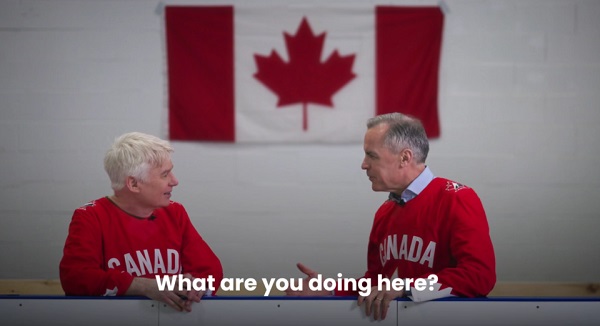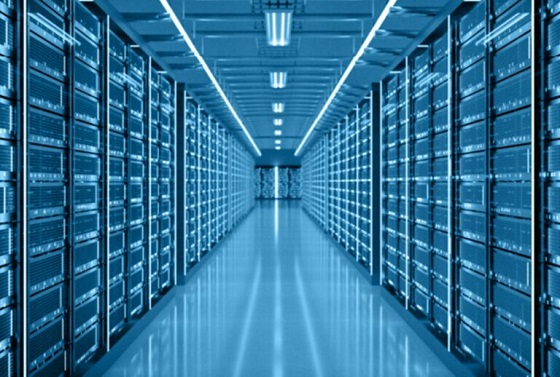National
CBSA Union president – ArriveCan wasn’t needed
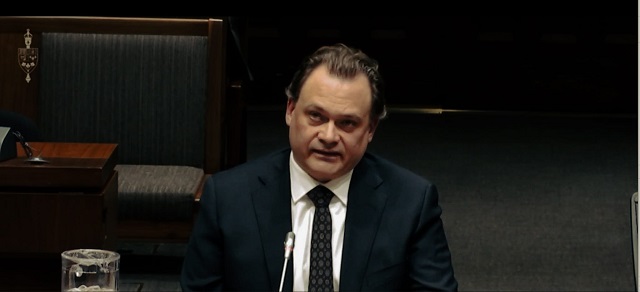
PACP’s Meeting No. 105 sheds light on the profound inefficiencies plaguing the Trudeau administration, as Mark Weber testifies on the ArriveCan’s failures and the cultural rot within the CBSA
In the latest episode of the ongoing saga that encapsulates the depth of dysfunction under the Trudeau administration, Meeting No. 105 of the PACP – Standing Committee on Public Accounts unfolded in what can only be described as a monumental barn burner. The spotlight shone intensely on Mark Weber, the resolute President of the Customs and Immigration Union, who took the stand to expose the underbelly of inefficiency and mismanagement festering with the ArriveCan from the perspective from his members on the ground.
In a testament to the burgeoning controversy, Weber’s testimony sliced through the facade of bureaucratic efficiency, laying bare the consequences of a government more concerned with image than substance. The ArriveCan debacle, with its spiraling $60 million expenditure, stands as a glaring symbol of the Trudeaus approach: reckless spending which is severely lacking accountability.
The session was a spectacle of irony and disarray that bordered on the comedic, as the theater of government dysfunction unfolded before our very eyes. Amidst the turmoil, Liberal MP Brenda Shanahan stood up, emblematic of the coalition’s unwavering detachment from reality, posing the question to Mark Weber:
“Can you please tell us what you have heard from your union members in terms of how ARRIVE can provide efficiencies to the previous paper-based system?”
Before diving into Weber’s response, it’s crucial to note the backdrop against which this farce was set. Here we had the Liberal party, clinging with desperate fingers to the thin reed of “efficiency,” as if this single word could magically overshadow the colossal sum of $60 million funneled into the abyss for an app that, as it turns out, was about as necessary as a screen door on a submarine.
Mark Weber’s response was as pointed as it was illuminating, a stark contrast to the fluff and bluster we’ve come to expect from the powers that be.
“In terms of the information that we needed for our purposes for customs officers, really all we needed was to be able to verify that the person was vaccinated, which everyone was able to do simply by showing us their vaccination on their phone or a printed-out copy.”
There it was, the moment of truth – the revelation that the taxpayer, the everyday Canadian, had been bilked out of $60 million for a redundant app, an app that wasn’t even a requirement in the practical conduct of our border security.
Weber then laid bare the operational fiasco that was the app’s implementation. The hours squandered on the ground, the bureaucratic hoops jumped through for information that seemed to serve no one, certainly not the Canadian public.
“It seemed like we were spending our time collecting information for others that in large part we don’t know or don’t think was used,”
he dissected mercilessly. And then came the kicker, the detail that should make every Canadian’s blood boil:
“As far as I know, no one verified where anyone was staying. You know, the hundreds of hours that our officers spent helping people collect this information at the border we don’t believe was really used at all.”
Mark was probed about another critical aspect: the training—or lack thereof—that his union members received on the proper use of the ArriveCan app. With a shake of his head, Mark’s response was disheartening but unsurprising. The training was minimal, leaving border guards underprepared and travelers equally bewildered. This lack of instruction exacerbated an already tense situation, pitting frustrated travelers against equally frustrated border personnel, a recipe for chaos and inefficiency at our nation’s gateways.
Mark didn’t stop there. He acknowledged that while technology can be a powerful ally, it is not a panacea for all woes. He underscored a fundamental truth: an app is merely a tool, and like all tools, its effectiveness is contingent upon the skill and expertise of those wielding it. In the realm of national security and border control, this means boots on the ground—trained, knowledgeable personnel ready to act. Mark stressed that despite the high hopes pegged on technological advancements like automated passport checkouts, these innovations have not significantly reduced wait times at airports. The anticipated streamline and efficiency, much vaunted by proponents of the app, have yet to materialize in any tangible form.
This situation leaves us with a glaring juxtaposition: on one side, a government heralding the dawn of a new, tech-savvy era in border management; on the other, the stark reality of frontline workers grappling with underpreparedness and ineffective tools. The mismatch between the glittering ideal and the gritty reality underscores a profound disconnect.
Mark painted a picture of an organization beset by inefficiency and bureaucratic bloat. He described a surreal scenario where the hierarchy was so top-heavy that there were instances of four superintendents tasked with supervising merely two employees. This, he argued, was indicative of a toxic culture that not only hampered operational effectiveness but also left little room for accountability.
More alarmingly, Mark highlighted a significant gap in the organization’s framework: the lack of whistleblower protection. This absence of safeguards for those willing to speak out against malpractices further entrenched the culture of silence and complicity, stifling any potential for reform or improvement from within.
In response to these criticisms, the Liberals and NDP, now bound in a coalition, deflected by invoking the specter of the Harper era, suggesting that the policies instituted during his tenure continued to cast a long shadow over the CBSA. However, this attempt to pivot away from current issues falls flat. The reality is, with the power and mandate to govern, the coalition could have engaged with the union or the CBSA long ago to address and reverse any contentious Harper-era policies. Yet, they chose inaction.
My fellow Canadians, as we close this chapter, let’s reflect on a critical issue that has metastasized within our public institutions—a malignancy that threatens the very integrity of our governance: the lack of whistleblower protection.
This deficiency, a silent but deadly cancer, undermines the moral and operational foundation of our services. When our dedicated public servants, those tasked with safeguarding the public good, stand muted, crippled by the fear of reprisal, we face a grave crisis. How can we expect improvement or rectitude within our systems if those witnessing wrongdoings remain shackled by fear? A system that stifles the courageous voices calling out corruption or malpractice is a system that has failed its people.
Consider the case of Luc Sabourin, a former employee of the CBSA. His experience is a stark illustration of this systemic failure. Sabourin spoke out, did his civic duty by reporting wrongdoing within his organization. But what reward did his honesty fetch? Bullying, ostracization, and a clear message: silence is safer than integrity. This is the dire consequence of a system that fails to shield its truth-tellers.
This, my fellow Canadians, is unacceptable. It’s high time we demand more than just superficial changes and empty promises from the Liberals and the NDP. Mere band-aid solutions and deflections to past administrations will not heal the deep-seated issues within our governance. The controversies swirling around instruments like ArriveCan and the toxic culture within the CBSA demand rigorous scrutiny, not mere sidestepping or finger-pointing. The swamp of corruption and malaise within our government requires draining, not mere change of guards or partisan rhetoric. Pierre Poilievre and his team, along with every conscientious lawmaker and citizen, must grab their metaphorical shovels. It’s time to excavate the entrenched bog of mismanagement and cleanse the festering wound of corruption that plagues our country.
Let this be a call to action: a plea for transparency, accountability, and genuine reform. For the health of our democracy, for the integrity of our institutions, and for the well-being of every Canadian, the time to act is now. Let’s unite in this critical endeavor to rejuvenate our system, to transform it into one that truly serves, protects, and represents us all.
For the full experience subscribe to The Opposition with Dan Knight .
Health
Tens of thousands are dying on waiting lists following decades of media reluctance to debate healthcare

Better thousands of us die prematurely, apparently, than risk a grownup conversation
About the same time as William Watson’s outstanding book Globalization and the Meaning of Canadian Life was being published in the late 1990s, the newspaper I worked for was sending a journalist to Europe to research a series of articles on how health care systems work in some of those countries.
The Rewrite is a reader-supported publication.
To receive new posts and support my work, consider becoming a free or paid subscriber.
I mention Bill’s book, which was runner-up for a public policy Donner Prize, because it exquisitely details many of the things Canadians believe about themselves that simply aren’t true. Which was the same reason why the Calgary Herald sent its health reporter (yes, there used to be such a thing), Robert Walker, to Europe – to expose its readers to the fact that there are more than two health care systems: our “defining” one and America’s, both of which are extremes. To the best of my knowledge, that remains the only time a Canadian news organization has taken on that task.
In every country examined in Walker’s reports, as is the case with almost every country in the world, public and private health care and insurance systems maintained a peaceful coexistence and the public’s needs were being met. Almost 30 years later, that remains the case. Also almost 30 years later, neither Bill’s book nor the Herald’s reporting has had the slightest impact on the prevailing media narrative in Canada. It remains determined to perpetuate the fear that any move to increase the role of private health providers or even allow doctors to work in both systems (as was proposed this week by Alberta Premier Danielle Smith) is the first step on the slippery slope to “American-style” health care. This line has been successfully used for decades – often hyperbolically and occasionally hysterically – by public monopoly advocates for Canada’s increasingly expensive and difficult to access systems. We have known for 40 years that once Baby Boomers like your faithful servant turned bald and grey that the system would be unsustainable. But that single, terrifying “American-style” slur has halted reform at every turn.
The Tyee responded with a “Danielle Smith’s secret plan to Destroy Public Health Care” column while the Globe and Mail’s Gary Mason, a Boomer, challenged my thesis here by suggesting it was time for open minds because “the reality is, the health care system in Canada is a mess.”
It is. And at least some of the blame – a lot, in my view – belongs at the door of Canadian news organizations that for decades have failed to fully inform readers by making them aware that there are a great many alternatives to just “ours” and “US-style.”
I was reminded of this in a recent Postmedia story concerning the perils of private health care provision. Referencing a study on MRIs, the story, right on cue, quotes the part of a study that states “It’s a quiet but rapid march toward U.S.-style health care.”
One would not want to suggest that those clinging to that parochial view should be denied a platform. But at the same time, readers have every right to demand that journalists push back and ask advocates for state monopolies simple questions such as “Why do you say that? Could it not be the first step towards UK-, German-, Dutch-, French-, Portugese- or Swedish-style health care?” and open the debate.
But, as it was 30 years ago and likely ever shall be, there is nothing to suggest that approach even crossed the reporter’s mind. Canadians deserve to be fully informed on major public policy matters and the record shows that when it comes to health care, media have largely failed to do so. Stuck in the fetid trench of an us and them narrative that compares two systems at extreme ends of the spectrum, the public is largely unaware that moderate alternatives exist, ensuring that no meaningful reforms will ever take place and tens of thousands of Canadians will continue to die on waiting lists – a story that continues to be of little interest within the mainstream. Better thousands of us die prematurely, apparently, than risk a grownup conversation that could challenge our national mythology and lead us down the path to “European-style” healthcare.
The Rewrite is a reader-supported publication.
To receive new posts and support my work, consider becoming a free or paid subscriber.
Postmedia’s Brian Lilley has written a defence of the use by journalists of anonymous sources. Lilley’s introduction describes him as coming down on both sides of the issue and that “Using anonymous sources is completely justified, if done right.” Well of course it is, but in my view it’s frequently and increasingly not being done right and its abuse is being exploited by government comms people to control the narrative.
An example of that occurred last week when the Globe and Mail, in a story concerning Prime Minister Mark Carney’s sojourn to the United Arab Emirates, declined to reveal the identity of a source offering very standard information. To wit:
“The (senior government) official, whom The Globe and Mail is not identifying because they were not authorized to speak publicly, said this visit matters because the UAE economy is very much driven by personal relationships – the kind that benefit from face-to-face meetings.”
This story had three bylines – from a senior parliamentary reporter, an institutional investing reporter and an economics reporter. It is inconceivable to me that, between them, they couldn’t find an on the record source who could explain how important it is, culturally, to have face to face meetings, particularly in that part of the world. Doing so would have added some needed thump to a “sources say” story and helped mute criticisms by others in the industry such as John Robson and Holly Doan, the latter stating in a Tweet that “Anon sources are gov’t propagandists.” Others have privately expressed their dismay.
Meanwhile, I expect Lilley’s piece is worth a read and it’s important to hear all sides but as it is behind a paywall I haven’t got to it myself. It’s also worth pointing out that a recent Reuters Institute survey put Lilley in Canada’s top 10 social media influencers and creators.
Sadly, we have more this week on unnecessary online smartassery by journalists.
First up is Global News’s Sean O’Shea who managed to allow himself to look like a member of Carney’s comms team when he Tweeted his disapproval of some fans’ behaviour at the Grey Cup.
Then came The Hill Times’s Stu Benson, who blasted his alarm from a loudspeaker before deleting.
Honestly, folks, to paraphrase grandpa’s advice and as I have to remind myself from time to time, just because something pops into your head doesn’t mean it has to pop onto your social media feed.
Last week’s column for The Hub on how Diversity, Equity and Inclusion initiatives remain alive and enforced in the nation’s newsrooms is available here. And don’t forget to watch out for the Full Press podcast with myself, Harrison Lowman and Tara Henley on Thursday.
(Peter Menzies is a commentator and consultant on media, Macdonald-Laurier Institute Senior Fellow, a past publisher of the Calgary Herald, a former vice chair of the CRTC and a National Newspaper Award winner.)
The Rewrite is a reader-supported publication.
To receive new posts and support my work, consider becoming a free or paid subscriber.
Business
Budget 2025: Ottawa Fakes a Pivot and Still Spends Like Trudeau
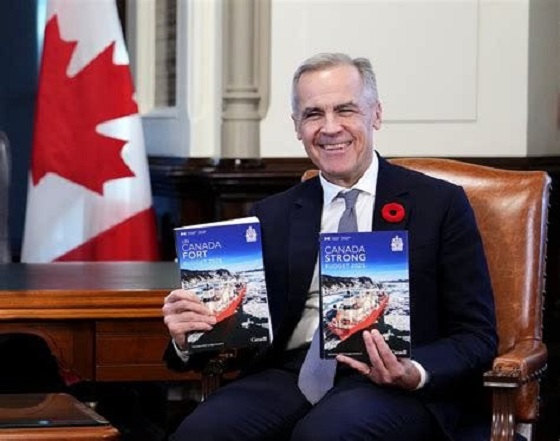
It finally happened. Canada received a federal budget earlier this month, after more than a year without one. It’s far from a budget that’s great. It’s far from what many expected and distant from what the country needs. But it still passed.
With the budget vote drama now behind us, there may be space for some general observations beyond the details of the concerning deficits and debt. What kind of budget did Canada get?
Haultain’s Substack is a reader-supported publication.
To receive new posts and support our work, please consider becoming a free or paid subscriber.
Try it out.
For a government that built its political identity on social-program expansion and moralized spending, Budget 2025 arrives wearing borrowed clothing. It speaks in the language of productivity, infrastructure, and capital formation, the diction of grown-up economics, yet keeps the full spending reflex of the Trudeau era. The result feels like a cabinet trying to change its fiscal costume without changing the character inside it. Time will tell, to be fair, but it feels like more rhetoric, and we have seen this same rhetoric before lead to nothing. So, I remain skeptical of what they say and how they say it.
The government insists it has found a new path, one where public investment leads private growth. That sounds bold. However, it is more a rebranding than a reform. It is a shift in vocabulary, not in discipline.
A comparison with past eras makes this clear.
Jean Chrétien and Paul Martin did not flirt with restraint; they executed it. Their budgets were cut deeply, restored credibility, and revived Canada’s fiscal health when it was most needed. The Chrétien years were unsentimental. Political capital was spent so financial capital could return. Ottawa shrank so the country could grow. Budget 2025 tries to invoke their spirit but not their actions. Nothing in this plan resembles the structural surgery of the mid 1990s.
Stephen Harper, by contrast, treated balanced budgets as policy and principle. Even during the global financial crisis, his government used stimulus as a bridge, not a way of life. It cut taxes widely and consistently, limited public service growth, and placed the long-term burden on restraint rather than rhetoric. Budget 2025 nods toward Harper’s focus on productivity and capital assets, yet it rejects the tax relief and spending controls that made his budgets coherent.
Then there is Justin Trudeau, the high tide of redistribution, vacuous identity politics, and deficit-as-virtue posturing. Ottawa expanded into an ideological planner for everything, including housing, climate, childcare, inclusion portfolios, and every new identity category. Much of that ideological scaffolding consisted of mere words, weakening the principle of equality under the law and encouraging the government to referee culture rather than administer policy.
Budget 2025 is the first hint of retreat from that style. The identity program fireworks are dimmer, though they have not disappeared. The social policy boosterism is quieter. Perhaps fiscal gravity has begun to whisper in the prime minister’s ear.
However, one cannot confuse tone for transformation.
Spending is still vast. Deficits grew. The new fiscal anchor, balancing only the operating budget, is weaker than the one it replaced. The budget relies on the hopeful assumption that Ottawa’s capital spending will attract private investment on a scale that economists politely describe as ambitious.
The housing file illustrates the contradiction. The budget announces new funding for the construction of purpose-built rentals and a larger federal role in modular and subsidized housing builds. These are presented as productivity measures, yet they continue the Trudeau-era instinct to centralize housing policy rather than fix the levers that matter. Permitting delays, zoning rigidity, municipal approvals, and labour shortages continue to slow actual construction. Ottawa spends, but the foundations still cure at the same pace.
Defence spending tells the same story. Budget 2025 offers incremental funding and some procurement gestures, but it avoids the core problem: Canada’s procurement system is broken. Delays stretch across decades. Projects become obsolete before contracts are signed. The system cannot buy a ship, an aircraft, or an armoured vehicle without cost overruns and missed timelines. Spending more through this machinery will waste time and money. It adds motion, not capability.
Most importantly, the structural problems remain untouched: no regulatory reform for major projects, no tax competitiveness agenda, no strategy for shrinking a federal bureaucracy that has grown faster than the economy it governs. Ottawa presides over a low-productivity country but insists that a new accounting framework will solve what decades of overregulation and policy clutter have created. More bluster.
To receive new posts and support our work, please consider becoming a free or paid subscriber.
From an Alberta vantage, the pivot is welcome but inadequate. The economy that pays for Confederation, energy, mining, agriculture, and transportation receives more rhetorical respect in Budget 2025, yet the same regulatory thicket that blocks pipelines and mines remains intact. The government praises capital formation but still undermines the key sectors that generate it.
Budget 2025 tries to walk like Chrétien and talk like Harper while spending like Trudeau. That is not a transformation; it is a costume change. The country needed a budget that prioritized growth rooted in tangible assets and real productivity. What it got instead is a rhetorical turn without the courage to cut, streamline, or reform.
Canada does not require a new budgeting vocabulary. It requires a government willing to govern in the best interest of the country.
Haultain’s Substack is a reader-supported publication.
Help us bring you more quality research and commentary.
-
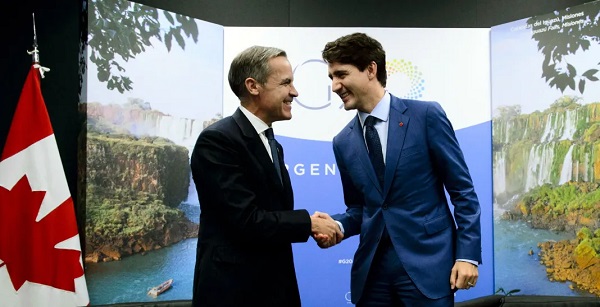
 Carbon Tax1 day ago
Carbon Tax1 day agoCarney fails to undo Trudeau’s devastating energy policies
-

 Business1 day ago
Business1 day agoBudget 2025: Ottawa Fakes a Pivot and Still Spends Like Trudeau
-

 Health1 day ago
Health1 day agoTens of thousands are dying on waiting lists following decades of media reluctance to debate healthcare
-

 armed forces2 days ago
armed forces2 days agoCanada At Risk Of Losing Control Of Its Northern Territories
-

 International2 days ago
International2 days agoCanada’s lost decade in foreign policy
-

 Opinion22 hours ago
Opinion22 hours agoLandmark 2025 Study Says Near-Death Experiences Can’t Be Explained Away
-

 Focal Points22 hours ago
Focal Points22 hours agoSTUDY: TikTok, Instagram, and YouTube Shorts Induce Measurable “Brain Rot”
-

 Censorship Industrial Complex1 hour ago
Censorship Industrial Complex1 hour agoUK Government “Resist” Program Monitors Citizens’ Online Posts









